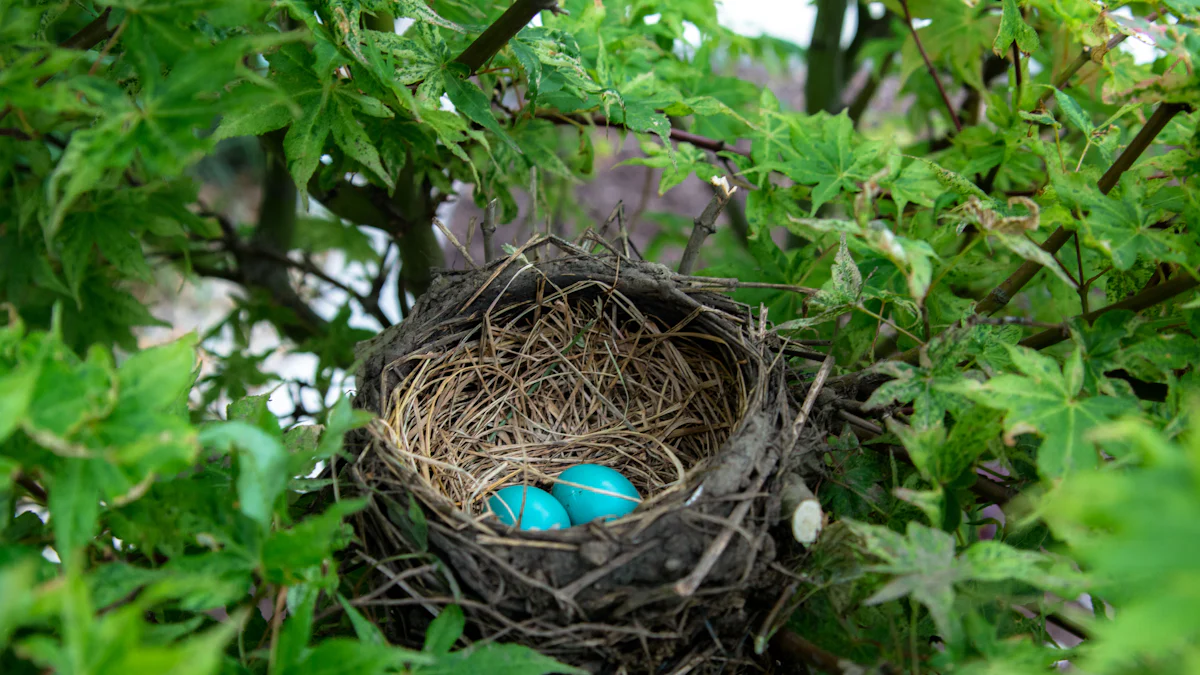
On World Architecture Day, the spotlight shifts to the intricate world of avian builders. Recognizing these natural architects is crucial in understanding the genius behind their creations. From Beijing's iconic Bird's Nest stadium to the diverse bird nests found globally, nature's influence on architecture is profound. Exploring how birds engineer and construct their homes unveils a fascinating realm of design and functionality.
The Significance of World Architecture Day
History and Purpose
-
World Architecture Day was established by the International Union of Architects (UIA) in 1985, aligning with UN World Habitat Day. This day serves as a global reminder of architects' collective responsibility in shaping a better future for human living spaces.
-
Celebrated annually on the first Monday of October, World Architecture Day emphasizes the vital role architects play in designing sustainable and resilient communities worldwide.
-
The inception of World Architecture Day coincides with the UN-Habitat Global Observance of World Habitat Day, highlighting the interconnectedness between architectural design and human habitat sustainability.
-
Through this celebration, society is urged to reflect on the significance of well-designed habitats and housing, promoting healthy living environments for all individuals.
Avian Builders: Nature's Architects

Birds, known for their remarkable architectural skills, construct intricate nests using various materials and techniques. Understanding the diversity of bird nests sheds light on the ingenuity of these avian architects.
Overview of Avian Architecture
Types of Bird Nests
-
Cavity Nests: Birds like woodpeckers create cavities in trees for nesting.
-
Platform Nests: Raptors build flat nests on high ledges or tree branches.
-
Cup Nests: Warblers weave delicate cup-shaped nests using grass and twigs.
-
Burrow Nests: Kingfishers dig tunnels into riverbanks to create their homes.
Materials Used by Birds
-
Grasses: Many birds utilize grass to weave sturdy nests.
-
Twigs: Sticks and twigs are commonly used for structural support.
-
Mud: Swallows mix mud with saliva to create adobe-like nests.
-
Feathers: Some birds line their nests with soft feathers for insulation.
Notable Avian Architects
Weaver Birds
Weaver birds, found in Africa and Asia, are renowned for their intricate woven nests resembling hanging baskets. These skilled artisans meticulously intertwine grasses and palm fibers to craft durable homes that sway gently in the breeze.
Bowerbirds
Male bowerbirds exhibit remarkable creativity by constructing elaborate bowers adorned with colorful objects like flowers, berries, and even bits of plastic. These decorative displays serve as courting grounds to attract potential mates.
Swallows
Swift and agile, swallows fashion cup-shaped mud nests under eaves or cliffs. Their architectural prowess lies in the precise mixing of mud and saliva to create secure structures that provide shelter for their young.
The Science Behind Avian Construction

Evolutionary Adaptations
Physical Adaptations
Birds have evolved unique physical features that enable them to construct intricate nests. Their beaks, specialized for gathering materials, vary in shape and size to suit different nesting needs. Wings provide stability during construction, while agile feet grasp twigs and branches securely. These adaptations showcase the evolutionary journey of avian architects towards efficient nest-building.
Behavioral Adaptations
In addition to physical traits, birds exhibit remarkable behavioral adaptations in nest construction. Instinct guides their meticulous selection of materials, with some species traveling long distances to collect specific items. Cooperative behaviors among certain bird communities highlight the social aspect of nest-building, where individuals work harmoniously to create safe havens for future generations.
Engineering Principles in Bird Nests
Structural Integrity
Bird nests exemplify structural integrity through ingenious design and meticulous construction. By strategically interweaving materials like grasses, twigs, and mud, birds create sturdy homes capable of withstanding environmental challenges. Each component serves a purpose in enhancing the nest's durability and functionality, reflecting nature's precision engineering at work.
Environmental Considerations
Environmental factors heavily influence avian architecture, shaping nest designs to suit diverse habitats. Birds adapt their construction techniques based on climate conditions, predator threats, and resource availability. Through trial and error over generations, avian builders have honed their skills to craft nests that offer optimal protection and comfort for their offspring.
Exploring the intricate world of avian architects on World Architecture Day unveils a realm of unparalleled creativity and engineering. The genius behind bird nests, from delicate cup-shaped structures to massive communal homes, showcases nature's unparalleled design prowess. By recognizing and admiring the ingenuity of these feathered builders, individuals can gain valuable insights into sustainable construction practices and harmonious living with the environment. Visit [HIXX SMART BIRD FEEDER] to discover the captivating designs and innovative techniques employed by our avian architects.Embracing the lessons from avian architects encourages a deeper appreciation for the beauty and functionality of natural creations in our built world.













